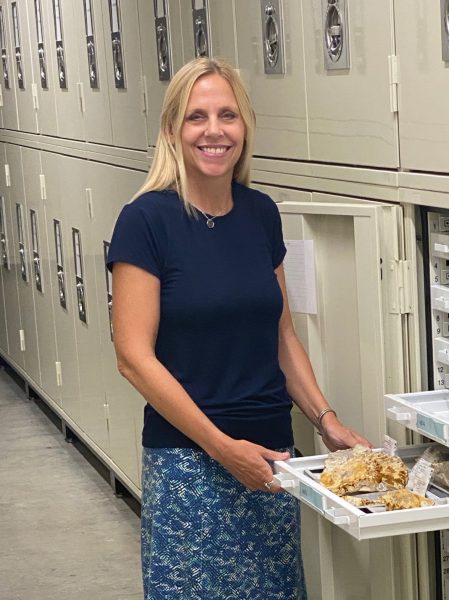Lisa Boucher: Director of the Non-Vertebrate Paleontology Laboratory
November 12, 2020

By Monica Kortsha
More than 4 million specimens and counting fill the drawers, shelves and storage warehouse space at the Jackson School of Geosciences’ Non-Vertebrate Paleontology Laboratory (NPL). But only about 20% of the specimens have been officially cataloged.
As the new director of the NPL, Lisa Boucher is leading the effort to record the laboratory’s immense holdings — which include fossil invertebrates and plants, microfossils, as well as rock and mineral samples — while compiling new specimens that the laboratory continues to take in.
A curatorial assistant at the lab since 2017, Boucher has plenty of experience working with volunteers, students and staff to keep the collections organized as they continue to grow.
“It’s a large-scale effort to maintain the collection, image the specimens and document their associated data,” said Boucher, a paleobotanist and former lecturer at The University of Texas at Austin and associate professor at the University of Nebraska at Omaha.
Boucher became the director of the NPL in November 2019, filling the spot left by former director Ann Molineux, who passed away in February 2018.
Among the latest incoming collections are thousands of thin sections and hand samples from Jackson School Professors Earle McBride and the late Bob Folk, as well as cave samples collected by Jackson School Professor Jay Banner and his research group.
The new specimens underscore a constant need at the NPL: adequate, climate-controlled space to store them all.
Boucher said a major victory for fossil storage was achieved in December 2019 with the opening of the NPL’s Ann Molineux Paleontology Laboratory, a climate-controlled space adjacent to the other NPL collections. Thousands of specimens have since moved into the space. Boucher said she is working to obtain funds for cabinets that will allow more specimens to make the move.
While running the NPL, Boucher is also continuing her own research on Cretaceous plants, focusing on how flowering plants came to be the most diverse and abundant species across different environments on Earth.
Back to the Newsletter